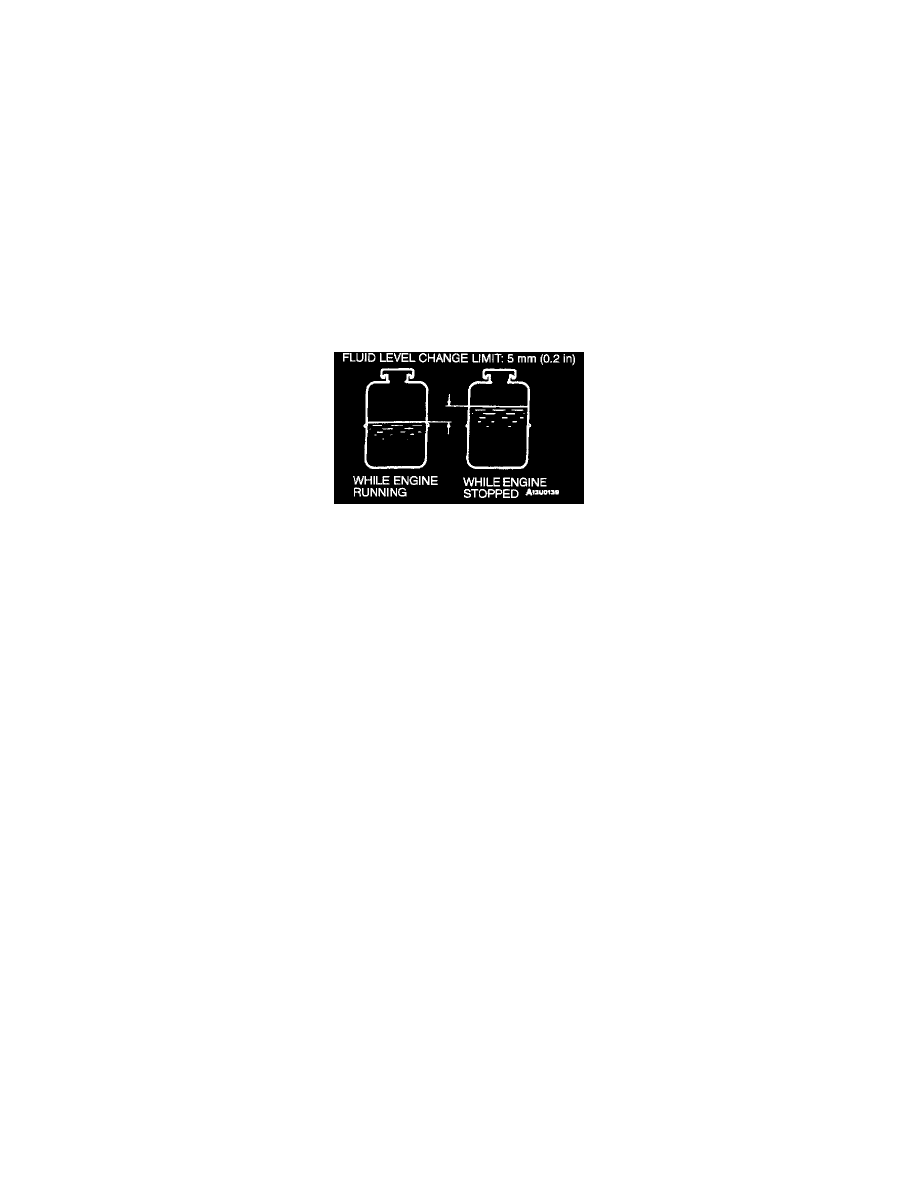Montero Sport LTD 4WD V6-3.5L SOHC (1999)

Power Steering Line/Hose: Service and Repair
Hydraulic System Air Bleeding
Perform air bleeding procedure as necessary after replacing the steering gear box or the steering fluid lines.
1. Raise and support the front wheels.
2. Disconnect the high-tension cable. Turn the steering wheel all the way to the left and right five or six times while using the starter motor to crank
the engine intermittently several times (for 15 to 20 seconds).
CAUTION:
-
Be careful not to place the high-tension cable near the fuel rail.
-
Perform air bleeding only while cranking the engine. If air bleeding is performed while the engine is running, air could enter the fluid. During
air bleeding, refill the steering fluid supply so that the level never falls below the lower mark on the dipstick.
3. Connect the high-tension cable. Start the engine (idling).
4. Turn the steering wheel to the left and right until there are no air bubbles in the oil reservoir.
5. Confirm that the fluid is not milky, and that the level is between the high and low dipstick marks.
6. Confirm that there is very little change in the fluid level when the steering wheel is turned left and right.
7. Confirm that the change in the fluid level is no more than 5 mm (0.2 inch) when the engine is stopped and when it is running.
CAUTION: If the fluid level rises suddenly after the engine is stopped, the air has not been completely bled. If air bleeding is not complete, there
will be abnormal noises from the pump and the f low-control valve, and this condition could cause reduce the life of the power steering
components.
8. If the change of the fluid level is 5 mm (0.2 inch) or more, the air has not been completely bled from the system, and thus must be bled completely.
